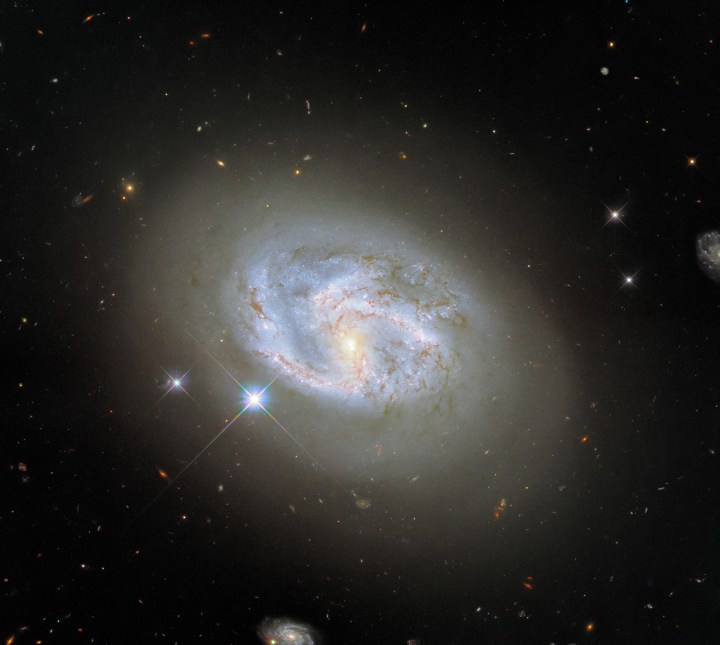
This week’s image from the Hubble Space Telescope shows no less than three galaxies, with the galaxy NGC 4680 featured prominently in the middle of the image and two smaller galaxies visible at the very bottom of the image and on the far right edge.
The galaxy in the center, NGC 4680, is most famous for hosting a supernova which was identified in 1997, called SN 1997bp. This supernova was spotted by an amateur astronomer from Australia named Robert Evans, who holds the record for the most supernovas discovered visually, with an incredible 42 events identified. He observes the sky from his back porch using a 12-inch (31 cm) reflecting telescope.
The NGC 4680 galaxy has some other interesting features, starting with how it is classified. Generally speaking there are three main types of galaxies: Spiral, elliptical, and irregular. Our galaxy, the Milky Way, is a spiral galaxy, with a bulge of matter in the center and arms reaching out in a spiral shape. Elliptical galaxies are ones which are stretched out like an oval, varying from almost circular to very long and thin. Irregular galaxies were more common in the early universe and have very little dust.
But not every galaxy falls neatly into these categories, so there are further distinctions. Lenticular galaxies, for example, are halfway between spiral and elliptical galaxies. And then there’s the subject of this Hubble image, NGC 2680, which has been classified as both a spiral and a lenticular galaxy. That’s because, as you can see from the image, it does have spiral arms — although these arms are fuzzy and not very well defined as they are in most spiral galaxies.
The Hubble scientists point out that galaxies also change over time, so their categorization can shift. “Galaxies are not static, and their morphologies (and therefore their classifications) vary throughout their lifetimes,” they write. “Spiral galaxies are thought to evolve into elliptical galaxies, most likely by merging with one another, causing them to lose their distinctive spiral structures.”
Editors' Recommendations
- Biggest stellar black hole to date discovered in our galaxy
- Hubble spots a bright galaxy peering out from behind a dark nebula
- James Webb images capture the galactic winds of newborn stars
- Hubble captures the dramatic jets of a baby star
- Hubble images the spooky Spider Galaxy




